By using our website, you agree to the use of cookies as described in our Cookie Policy
Dental Care for Your Cats & Dogs
Dental Care for Your Cat and Dog
Twenty or Thirty years ago, veterinarians were just beginning to talk to clients about dental care in their pets. We began to realize just how important dental hygiene is to the overall welfare of our furry friends. Research in human medicine started to show us how dental infections can affect health through damage to the body organs such as liver, kidneys, and heart. Pain from dental infections can result in chronic pain, oral abscesses, even nasal sinus infections, and result in substantial loss of teeth due to these infections.
While veterinarians have certainly made some headway in educating clients on the need for dental care in their pets, we have a long way to go to get everyone “on board” with dental care.
In human dentistry, prevention is the key - twice daily brushing for your own teeth is the “Gold Standard” to keep you and your teeth together in the long-term! That is supported by every 6 months examinations to make sure you have no problems. In many ways human dentists have it “easy” - their patients will sit for a thorough examination and cleaning of their teeth to assess for and treat tooth problems. Veterinarians aren’t that lucky...
Definitions – So We Are All on the Same Page
Peridontal diseases are infections of the structures around the teeth, which include the gums, periodontal ligament and alveolar bone. Like many diseases periodontal disease is a progressive disease. It starts when bacteria in the mouth form a substance called plaque that sticks to the surface of the teeth (the best way to prevent tartar build-up is daily brushing of your pet’s teeth). The problems begin when the minerals in our pet’s saliva harden the plaque into dental calculus (also known as tartar). This tartar accumulates both above and below the gum line leading to inflammation (gingivitis) and further accumulation of plague which leads to periodontal disease.
When plaque and calculus develop below the gum line the real problem begins. This “progression” of the disease starts to damage the supporting tissue, periodontal ligament, around the tooth and eventually the alveolar bone. Finally, this bacteria below the gum line stimulates our pet’s immune system to fight the periodontal disease but the chemicals released by the white blood cells cause further damage to the supporting tissues of the tooth. Instead of helping the immune system actually worsens the disease. The only solution now is a trip to your veterinarian.
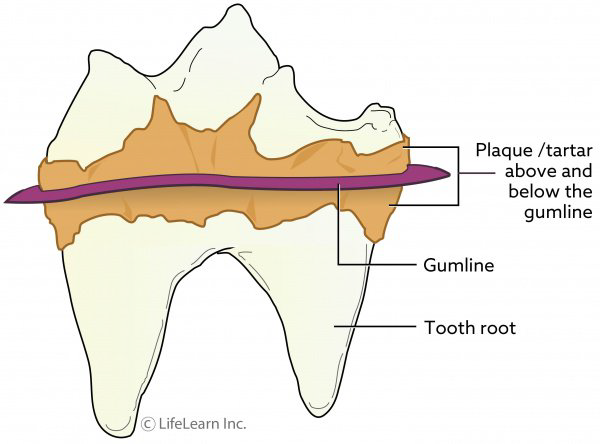
Here are some images of actual periodontal disease so you can check your own pet’s teeth to see how they compare on the periodontal disease continuum.
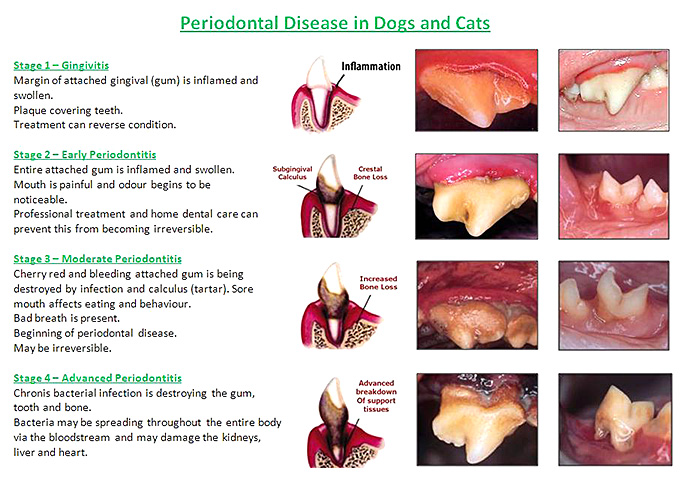
When Do I Know My Pet Needs a Dental Cleaning?
The best advice we can give is ask your veterinarian on your next annual wellness visit to check your pet’s mouth for dental disease. But here’s what the American Veterinary Dental College says are the signs of oral and dental disease in cats and dogs:
• Bad breath.
• Loose teeth or teeth that are discolored or covered in tartar.
• Your pet shies away from you when you touch the mouth area.
• Drooling or dropping food from the mouth.
• Bleeding from the mouth.
• Loss of appetite or loss of weight (this combination can result from diseases of many organs, and early veterinary examination is important).
If your pet is displaying any of these symptoms it’s past time for a dental cleaning.
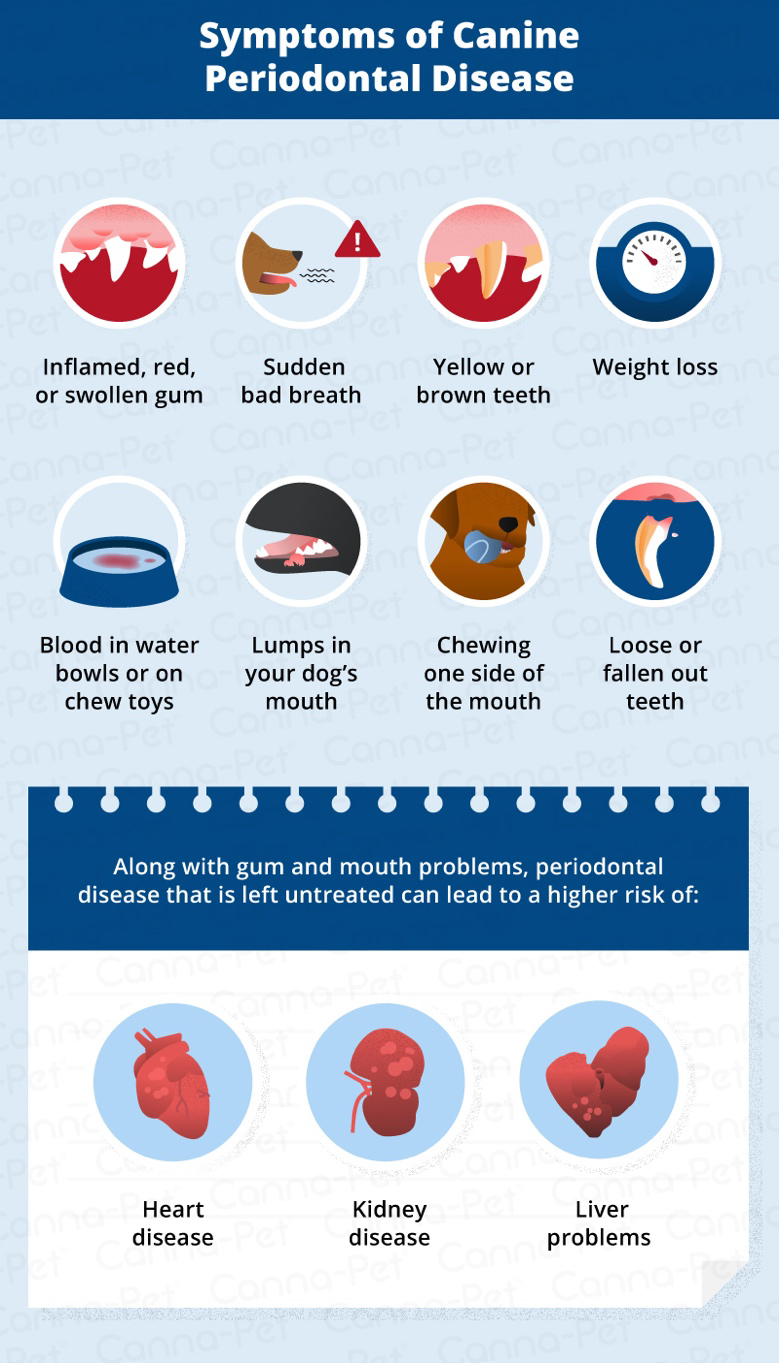
Small Animal Teeth Issues
Dental care is important in all veterinary patients but here we are referring to our cat and dog patients. Understandably, the smaller the patient, the smaller the teeth. This makes our cats and smaller dogs more at-risk for dental problems. Why?
Each tooth is held in place in the mouth by erupting or growing out of the upper and lower jaw bones (alveolar bone). The depth of this attachment is proportional to the size of the tooth. Each tooth is held in that bone by periodontal ligaments that attach the root to the jaw bone. Little teeth have smaller ligaments, and these ligaments deteriorate with inflammation of the gums, called gingivitis in its mild form or periodontal disease as things get bad.
The primary cause of gingivitis is bacteria that live in the mouth and on the teeth in both people and pets. These bacteria leave a coating on the teeth, called plaque, that if not removed, gets calcified over time in the mouth environment, creating hard, calcium based bacterial coating on the teeth that brews inflammation and infection at the gum-line. With time, this can lead to pain, inflammation, infection, periodontal ligament weakening, abscess in of tooth roots, and eventually tooth loss. In people we brush our teeth twice a day (Or we should!!). Since dogs and cats can’t brush their teeth, they get much more problems much more quickly than people. Statistics say that the vast majority of pet dogs and cats have significant calculus (calcified bacteria) on their teeth by 3 years of age. Over time, more inflammation leads to a change in the microbiome of the mouth, allowing more aggressive and detrimental bacteria to live on and around the teeth. That leads to bad breath (at minimum) and, progressive levels of damage to the gums, with eventual tooth loss.
If all that happened ultimately for our pets was loss of teeth, this would be bad enough, but disease in the mouth has been shown to lead to serious disease for the rest of the body. Infection from the mouth can move through the blood to cause liver disease, lung infections, damage the kidneys on a microscopic level that can lead to premature kidney failure. Blood-borne infection can cause damage to the main heart valves that can lead to heart-valve infection/ leakage (endocarditis or endocardiosis) that can ultimately lead to heart failure and death.
So What Can a Client Do?
Brushing teeth, first as a puppy or kitten to train them to allow dental brushing, then later with adult teeth, helps our pets to minimize plaque accumulation. Plaque is soft and easily removed with brushing. Little plaque leads to little calculus, and minimal inflammation in the mouth. The teeth and gums stay happy and healthy, rather than diseased and abscessed. We recommend daily brushing ideally with a pet toothpaste. These pastes are edible, and non-foaming, so they don’t upset a pet’s stomach. As an added benefit, they help to enzymatically clean the plaque off the teeth, and do not need to be rinsed out of a pet’s mouth, making life easier for you, the pet owner!
So, we know life happens, so many people are less than stellar on their commitment to daily brushing. The good news, is that even a couple of times a week will go a long way to keep Fluffy’s teeth healthy and in his mouth at 12 years of age! Because priorities in life can get in the way, that’s when your veterinarian can help. Routine, often annual, dental cleanings can maintain your pet’s mouth in pretty good shape, allow someone to get in there and check for problems.
There are prescription “Dental Diets” that can help with abrasives to help “scrape” the teeth as they chew their food. They are proven to help.
There are various types of “Dental Chews” that encourage chewing that can help with plaque accumulation. I would recommend those chews with the seal of approval from the Veterinary Oral Health Council, a recommendation from veterinary dentists certifying that the products do help retard plaque and tartar on the teeth of your pet. Here is a link to that site. http://www.vohc.org
Some water additives are believed to help, but I am not completely convinced. They seem to help kill off some of the mouth bacteria, but on their own, without the other things, are not likely the be-all-to-end-all!
Keep in mind, in the end, nothing is as good as teeth brushing to maintain mouth health long- term.
Dental Cleanings
To Anesthetize or Not?
There are veterinarians, (as well as non-veterinarians) who will clean teeth without any anesthesia. Both the AVMA and The American Animal Hospital Association do NOT endorse the use of non- anesthetic dental procedures. Why? Because when the pet is awake, there is not way to address disease, or plaque, or calculus under the gum-line. You cannot easily reach the rear teeth, which generally are the worst problem. And you cannot perform x-rays (radiographs) to see the root structure and health. Studies have shown about 25% of normal mouths even as young as 3 years of age had significant disease needing tooth extraction when radiographs of the mouth were taken.
So our recommendation is to allow your pet to be anesthetized properly, to intubate their airway and avoid inhalation of any bacteria, to supportively oxygenate, to more quickly and accurately assess the mouth and deal with the problems that are there. Effective teeth cleaning is done in pets with water and ultrasonic vibration scaling equipment that washes and vibrates any calcium deposits and bacteria off the enamel of the tooth, and gets in the pocket under the gum-line to flush out those pockets. After scaling, microscopic little scratches need to be smoothed off the enamel. This is done by using a very fine grit polish on the teeth to smooth and inhibit attachment of bacteria after the dental cleaning. Various wax sealant products are used to try to also inhibit bacterial attachment over a longer period of time.
In our hospital, we recommend radiographs of all the teeth at the time of the dental cleaning. Most dogs or cats presenting for dental procedures already have some level of gingival (gum) inflammation or periodontal disease. Many are middle aged to older pets.
Attached is the link to the American Veterinary Dental College (AVDC) web site that discusses
“Dental Scaling Without Anesthesia” https://www.avdc.org/dentalscaling.html
What is the risk?
No anesthetic is without risk, but over the last 30 years of my practice career, the sophistication of anesthetic agents, of monitoring systems, and frankly quality of equipment is far better than before. We believe strongly that the risk to the body of NOT performing an anesthetic dental procedure is greater than the risk of regular dental cleaning and maintenance. It is never a zero risk, but is very low.
So, what do we do to minimize risk?
1. Recommend initial blood screening before surgery to check the health of the major organs, and for normal red, white and platelet cell numbers.
2. Recommend intravenous fluid therapy throughout the anesthetic procedure.
3. Use of up-to-date anesthetic regimes, tailored to your individual pet’s health.
4. Exterior warm air blankets during anesthesia to maintain body temperature.
5. Endotracheal intubation - to deliver anesthetic gases, to stop aspiration of any fluids.
6. Mechanical ventilators - to ensure adequate oxygenation during any and all anesthetic procedures.
7. State of the art digital radiography system to best see any problems under the gum-line.
8. Anesthetic monitoring equipment - to watch electrocardiogram of the heart activity, oxygen saturation monitoring, temperature, and blood pressure.
9. All necessary equipment for dental extractions if needed, including Vet-tome extraction system to more quickly perform tooth extractions with minimal bone loss.
Attached is the link to the AVDC site discussing the risks of anesthesia:
https://www.avdc.org/anesthesia.html
Extractions - Are they Really so Bad?
After my long career, seeing thousands of pets with dental procedures, I firmly believe that a diseased tooth should always be removed. If teeth have less than 50% of their root attached, they should be removed. If they are mobile, they should be removed. If they show root abscesses on X-ray, they should be removed.In by far most pets with extracted teeth, the mouth heals very quickly. Within a week, most sites of tooth extraction have healed and are no longer painful.
Don’t be fooled! Dental “extraction” is a word we use, but extractions are truly “Dental Surgery”. They take time, effort, and careful work to successfully remove teeth. Some teeth have multiple roots, so the teeth are much like human extraction of “Wisdom Teeth”. They require tooth sectioning, bone drilling, sweat-inducing muscular effort to separate them from the jaw bone to remove them effectively. They can be time consuming and frustratingly difficult to do. They can be expensive, but it is not uncommon to take multiple hours to finish with a patient with multiple tooth extractions.
Through research, we know that an animal’s teeth are formed anatomically the same as a human’s teeth. The nerve anatomy is the same. We are well aware that in people, even teeth that appear normal can be abscessed and exquisitely painful. We know our pets hide pain as much as possible. So we must treat when we know there is a problem, to try to alleviate the pain that we believe they feel, but cannot communicate to us.
Behaviorally, I have found over and over again, dogs and cats with bad dental disease act much more normal, younger and happier after they heal from dental extractions. Many owners over the years comment on how much better the pet acts and feels shortly after dental extraction. My take home: if teeth are bad, take them out! A comfortable patient with fewer teeth is a happier patient than one allowed to keep his rotten teeth. Frankly, even dogs and cats with NO teeth, can get along without any troubles, will eat, and be happy. Humans worry about a lack of teeth, but our pets don’t care!
At Plateau Veterinary Hospital, and our Sister Clinics, Willamette Valley Animal Hospitals in Portland region, we do dental specials every March, June, September and December, when Dental procedures are 20% off. We perform these almost every day of the year, but in those months, there is a “Special”, simply to encourage people to step up and get it done. We know these procedures are expensive. Our hospitals make every attempt to minimize the price, but dental work is time-consuming, difficult, and often done on our older pets.
Keep this in mind: Regular dental cleaning throughout the life of your pet - maybe every 1 to 2 years, will be less costly overall, better for your pet, keeping them healthier, living longer, with fewer teeth lost to time and disease.
Sheri Morris DVM Diplomate, American Board of Veterinary Practitioners (Canine and Feline Specialist) Owner
‹ Back



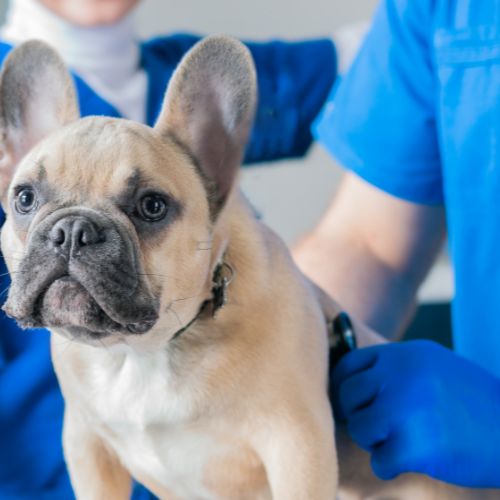
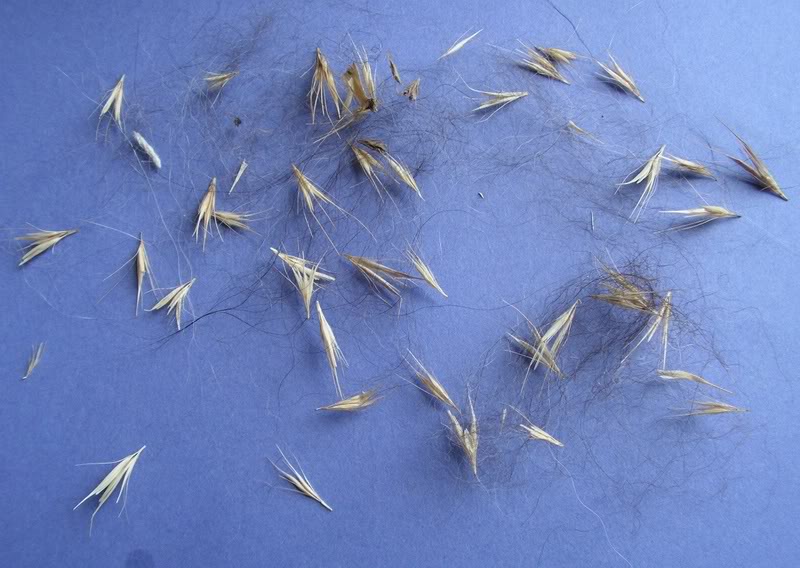

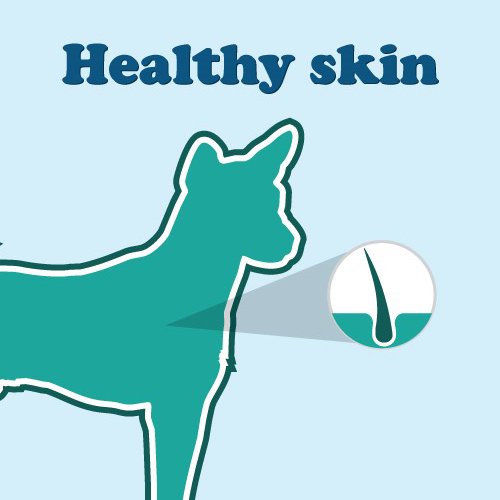

Comments